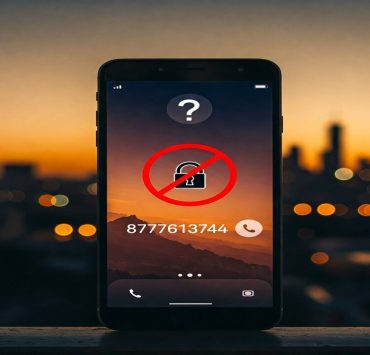The number 1410100001 has sparked confusion and concern among countless individuals who’ve encountered it via calls, texts, or even scam alerts. Is it a legitimate business contact or a dangerous hoax? In this comprehensive guide, we’ll explore the origins of this number, its ties to companies like AT&T, Wells Fargo, and FedEx, and how to protect yourself from potential scams.
What Is 1410100001? Breaking Down the Basics
The 1410100001 number follows the North American Numbering Plan (NANP), which includes countries like the U.S., Canada, and parts of the Caribbean. While it appears as a standard 10-digit phone number, its frequent misuse in unsolicited communications has made it infamous. Users report receiving text messages from 1410100001 that mimic legitimate companies, such as delivery updates from UPS or fraud alerts from Equifax. However, many of these messages are phishing attempts designed to steal personal data.
The number’s ambiguity stems from spoofing—a technique where scammers disguise their real number to appear trustworthy. For instance, a message from 1410100001 might claim to be from Wells Fargo, urging you to “confirm your account details” via a malicious link.
Legitimate Uses of 1410100001: When Is It Real?
Some organizations do use 1410100001 for automated communications. Here’s how:
- AT&T Notifications:
Subscribers occasionally receive texts from 1410100001 about billing cycles, service outages, or payment reminders. These are typically legitimate but always verify through your AT&T account portal. - Financial Alerts (Wells Fargo):
The 1410100001 Wells Fargo connection is valid for fraud warnings or transaction alerts. However, legitimate messages will never ask for passwords or PINs. - Delivery Services (FedEx/UPS):
Both FedEx and UPS may use automated systems to notify customers about packages. A text message 1410100001 from these companies should align with your tracking history.
Key Takeaway: If you’re unsure about a txt from 1410100001, cross-check it with official company communications.
The Dark Side: How Scammers Exploit 1410100001
Fraudsters capitalize on the number’s association with trusted brands. Common scams include:
1. Phishing for Financial Data
A text from 1410100001 might impersonate Equifax, claiming, “Your credit report has suspicious activity. Click here to secure your account.” These links often lead to fake login pages designed to harvest Social Security numbers or bank details.
2. Fake Delivery Notifications
Scammers send urgent messages from 1410100001 like, “Your FedEx package couldn’t be delivered. Pay a fee to reschedule.” The link may install malware or direct you to a payment scam.
3. Impersonating Banks (Wells Fargo Example)
A 1410100001 Wells Fargo scam message might read: “Unauthorized login detected. Verify your account now.” These messages prey on fear to trick users into surrendering sensitive information.
Red Flags: How to Spot a 1410100001 Scam
Not all texts from 1410100001 are malicious, but watch for these warning signs:
- Generic Greetings:
Legitimate companies use your name or partial account numbers. Messages starting with “Dear Customer” are suspect. - Mismatched Links:
Hover over hyperlinks (without clicking!) to check their destination. A text message 1410100001 claiming to be from UPS might direct you to “ups-tracking.net” instead of the official “ups.com.” - Pressure to Act Immediately:
Scammers use urgency to bypass your critical thinking. Phrases like “Your account will be locked in 24 hours” are red flags. - Requests for Sensitive Data:
Reputable institutions like Equifax or Wells Fargo will never ask for passwords, PINs, or SSNs via text.
How to Verify a Message from 1410100001
- Contact the Company Directly
Use the phone number or email from the company’s official website—not the one provided in the suspicious txt from 1410100001. - Check Your Accounts
Log into your bank, delivery, or credit monitoring account (e.g., Equifax) to see if the alert matches. - Use Anti-Scam Tools
Apps like Truecaller or your phone carrier’s spam filter can block numbers like 1410100001.
What to Do If You’ve Engaged with a Scam
- Secure Your Accounts
Change passwords for any compromised accounts and enable two-factor authentication. - Monitor Financial Activity
Review bank and credit card statements for unauthorized charges. Consider freezing your credit through Equifax or other bureaus. - Report the Scam
File a complaint with the FTC (ReportFraud.ftc.gov) and notify the impersonated company (e.g., FedEx or Wells Fargo).
Why Is 1410100001 Still Active? The Challenge of Number Spoofing
Scammers exploit weaknesses in caller ID systems to spoof numbers, making it appear as though a text 1410100001 is from a trusted source. While regulations like the TRACED Act aim to combat spoofing, enforcement remains challenging. Carriers are gradually implementing STIR/SHAKEN protocols to verify caller authenticity, but until then, vigilance is essential.
Proactive Protection: How to Avoid Future Scams
- Educate Yourself
Learn common phishing tactics. For example, a weird text from 1410100001 with odd formatting or typos is likely fraudulent. - Use Technology
Enable spam filters on your phone and email. iPhones and Android devices have built-in settings to block 1410100001 or similar numbers. - Stay Skeptical
Verify unexpected messages, even if they appear to come from AT&T or UPS.
Final Thoughts
The 1410100001 number exemplifies the blurred line between legitimate alerts and sophisticated scams. By understanding its dual nature—used by companies like FedEx for logistics and by fraudsters for phishing—you can navigate these messages safely. Always prioritize verification over urgency, and empower yourself with tools to block and report suspicious activity.
Read More : 547x-lp83fill , when is 547x-lp83fill going to be live
Frequently Asked Questions (FAQs)
1. Can 1410100001 be linked to real companies like AT&T or FedEx?
Yes. AT&T, FedEx, and Wells Fargo have used this number for automated alerts. However, scammers spoof it frequently. Always verify through official channels.
2. What should I do if I receive a weird text from 1410100001?
Do not click links or reply. Delete the message and contact the company directly using their verified contact information. Report scams to the FTC.
3. How can I stop receiving messages from 1410100001?
Block the number through your phone settings and enable spam filters. Carriers like AT&T and Verizon also offer scam-blocking services.
Read Also : zytescintizivad spread , fidzholikohixy



